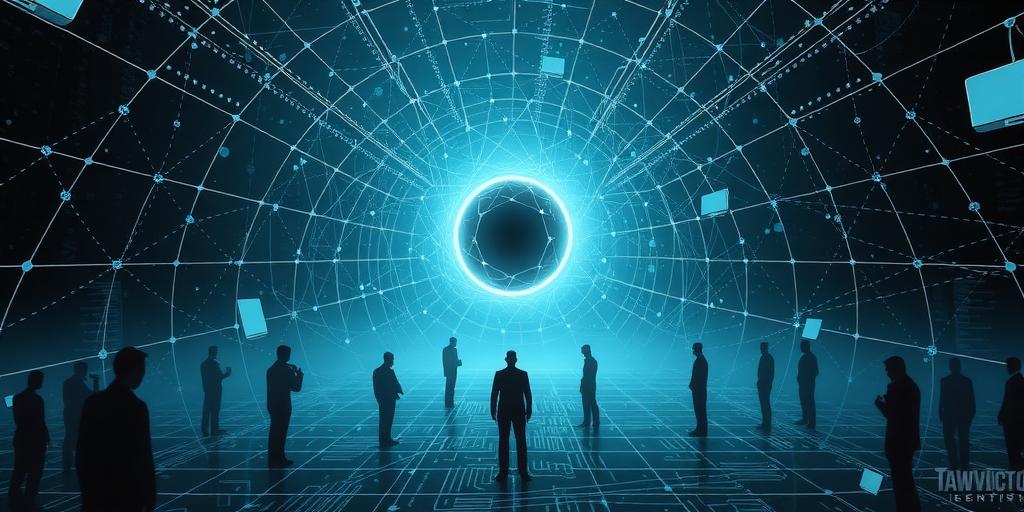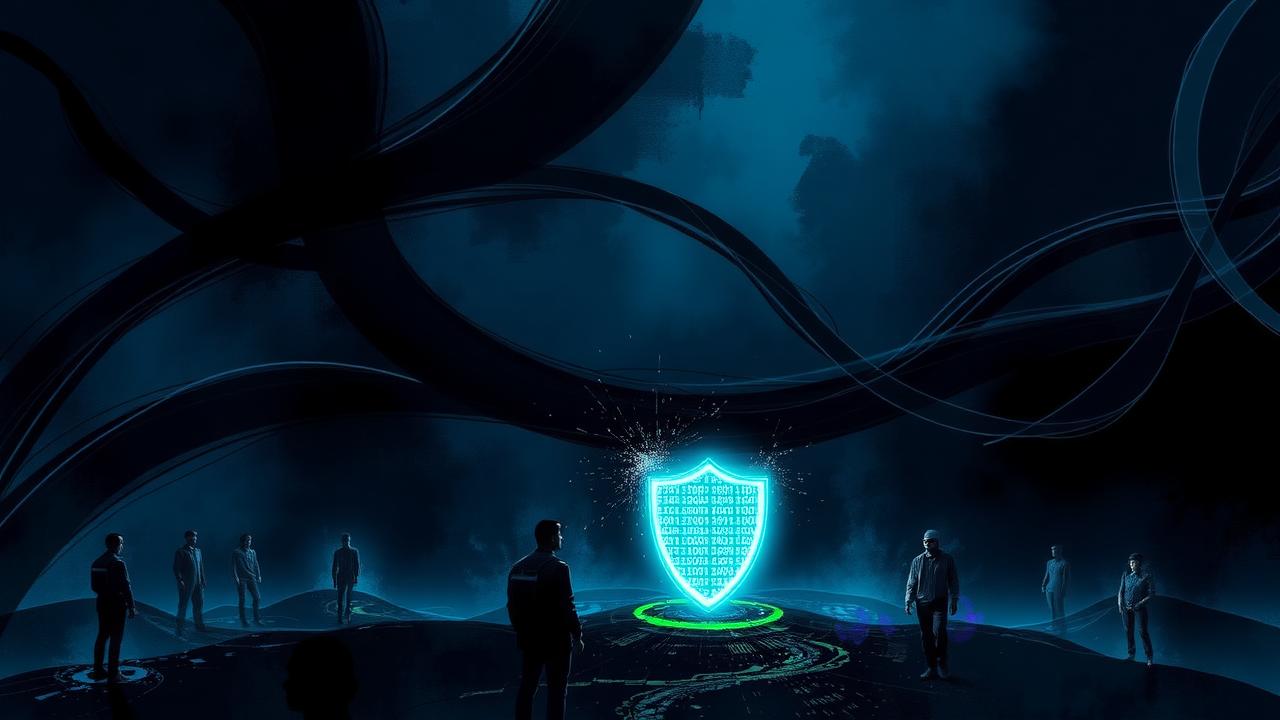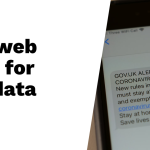In 2025, the significance of dark web scanning services has grown as a crucial layer of identity protection. The dark web, a hidden segment of the internet notorious for illicit activities like selling stolen data, poses diverse threats to individuals and organizations alike. By implementing real-time monitoring systems, businesses can receive alerts about compromised information quickly. These automated tools scan various forums to pinpoint sensitive data, enabling early detection and a swift response to potential breaches. Moreover, continuous monitoring not only aids compliance with regulations but also fosters customer trust by helping maintain brand reputation in an increasingly dangerous digital landscape.
Table of Contents
- What is the Dark Web?
- Why Monitor the Dark Web?
- How Dark Web Monitoring Works
- Advantages of Dark Web Monitoring
- Major Risks Found on the Dark Web
- Features of Top Dark Web Monitoring Services
- Steps to Take After a Data Breach
- Future Trends in Dark Web Monitoring
- Why Invest in Dark Web Scanning?
- Final Thoughts on Dark Web Safety
- Frequently Asked Questions
1. What is the Dark Web?

The dark web is a hidden segment of the internet that operates outside the reach of traditional search engines. Accessing this part of the internet requires special software, like Tor, which masks user identities and activities. This anonymity attracts a mix of content, including forums, marketplaces, and, unfortunately, many illegal services. While not everything on the dark web is illegal, it has a strong association with criminal activities, such as drug trafficking and hacking services. Cybercriminals often leverage this environment to buy and sell stolen data, including credit card information, making it a haven for those engaged in identity theft and fraud. On the flip side, some users, like journalists and activists, utilize the dark web to protect their privacy and communicate securely. Law enforcement monitors this space to gather intelligence on ongoing criminal activities. Understanding the dark web is essential for anyone concerned about cybersecurity and data protection.
2. Why Monitor the Dark Web?
Monitoring the dark web is crucial for several reasons. First, it helps identify compromised data before it can be misused, allowing individuals and organizations to take necessary actions swiftly. For example, if personal information is found on a dark web forum, real-time alerts enable users to change passwords and secure accounts quickly, minimizing potential damage. This proactive approach not only provides peace of mind but also protects an organization’s reputation by addressing issues before they escalate. Moreover, monitoring can uncover hidden threats that traditional security measures might miss. By keeping an eye on the dark web, businesses can stay informed about the latest cybercriminal tactics, ensuring their defenses remain robust. This vigilance also aids in assessing the effectiveness of existing security measures and can help organizations comply with industry regulations and standards. Investing in dark web monitoring services can be a vital part of a broader cybersecurity strategy, ultimately safeguarding sensitive information and maintaining trust.
3. How Dark Web Monitoring Works
dark web monitoring is a crucial service that helps protect individuals and organizations from identity theft and data breaches. Automated tools continually scan various hidden platforms on the dark web where sensitive information is often traded. These tools utilize advanced algorithms to identify compromised data, such as personal details, login credentials, and financial records. When a user’s information is detected, the monitoring service generates real-time alerts, enabling prompt action.
Continuous monitoring is essential, as it provides ongoing protection against newly emerging threats. Users benefit from risk assessment tools that evaluate how likely their data is to be exposed based on what is found. Many services allow for customizable alerts, letting users specify certain keywords or types of data they want to monitor. This tailored approach ensures that users only receive notifications about the information that matters most to them.
The reports generated offer context regarding the threat level and suggest actionable steps to mitigate potential damage. Users can set preferences for how often they receive alerts, ensuring they stay informed without being overwhelmed. By incorporating dark web monitoring into their cybersecurity strategy, individuals and businesses can stay one step ahead of cybercriminals.
4. Advantages of Dark Web Monitoring
Dark web monitoring offers several significant advantages for individuals and organizations concerned about their online security. One of the primary benefits is the rapid detection of compromised data, which can drastically reduce the time needed to respond to a breach. Instead of waiting for months to discover that sensitive information has been leaked, organizations can react within hours. This swift action not only helps in mitigating damage but also plays a crucial role in maintaining customer trust. By addressing potential threats quickly, businesses can reassure clients that their data is secure.
Another advantage is regulatory compliance. Many organizations face legal requirements to protect customer information, such as GDPR and CCPA. Dark web monitoring assists in meeting these obligations by providing timely notifications of data breaches, thus minimizing the risk of incurring hefty fines. Additionally, by staying informed about risks, businesses can prevent identity theft and fraud, safeguarding their reputation and financial health.
Moreover, early intervention through monitoring can save substantial costs associated with data breaches. The financial impact of cybercrime is staggering, and investing in monitoring services can be a proactive approach to avoid losses. These services also provide insights into potential vulnerabilities in security, allowing organizations to strengthen their defenses and enhance their overall security posture. With the knowledge gained from monitoring, companies can allocate resources more effectively and prioritize their cybersecurity efforts, ultimately giving them a competitive edge in the field.
5. Major Risks Found on the Dark Web
The dark web is a breeding ground for various risks that can severely impact individuals and organizations. One of the most alarming threats is the sale of stolen personal information, such as Social Security numbers and credit card data, which can lead to identity theft. Cybercriminals often exploit this stolen data in financial fraud schemes, resulting in significant monetary losses for victims. Additionally, the dark web facilitates the trade of illegal goods and services, including drugs and weapons, which poses a broader risk to public safety.
Identity theft is a prevalent issue, where criminals impersonate individuals using stolen data, wreaking havoc on their lives. Corporate espionage is another major risk, as hackers target sensitive business information to gain competitive advantages. Phishing attacks frequently originate from dark web forums, leading unsuspecting users to compromise their credentials unknowingly. Furthermore, ransomware services are available for purchase, enabling criminals to launch devastating attacks against businesses and demand ransoms for data recovery.
Data leaks that expose customer information can lead to lawsuits and reputational damage for companies. Individuals seeking to buy illegal goods may fall victim to scams, resulting in financial loss and further complications. Even social issues like cyberbullying and harassment are exacerbated through the anonymity offered by dark web platforms, creating a toxic environment. Understanding these risks is crucial for anyone looking to protect their identity in an increasingly digital world.
| Risk Type | Description | Potential Impact |
|---|---|---|
| Stolen Personal Information | Includes Social Security numbers and credit card data. | Identity theft, financial loss. |
| Financial Fraud Schemes | Exploitation of compromised data for monetary gain. | Significant financial losses, reputational damage. |
| Sale of Illegal Goods and Services | Includes drugs and weapons. | Legal repercussions, increased crime rates. |
| Identity Theft | Criminals impersonate individuals using stolen data. | Loss of reputation, legal issues. |
| Corporate Espionage | Stealing sensitive business information. | Loss of competitive advantage, financial impact. |
| Phishing Attacks | Originates from dark web forums and marketplaces. | Data breaches, loss of sensitive information. |
| Ransomware Services | Offer tools for launching attacks against businesses. | Operational disruptions, financial losses. |
| Data Leaks | Exposes customer information, leading to lawsuits. | Potential legal penalties, loss of customer trust. |
| Scams Targeting Individuals | Financial loss for those seeking illegal goods. | Economic impact, emotional distress. |
| Cyberbullying and Harassment | Facilitated through anonymous platforms. | Emotional and psychological harm to victims. |
6. Features of Top Dark Web Monitoring Services
Effective dark web monitoring services come equipped with a variety of features designed to keep your personal and organizational data safe. One key feature is comprehensive scanning, which covers multiple dark web sources to collect a wide range of data. This ensures that any sensitive information, such as stolen credentials or financial details, is detected swiftly. AI-powered detection enhances the speed and accuracy of this process, allowing for rapid identification of potential threats.
Additionally, these services offer customizable monitoring options, enabling users to tailor alerts and specify the types of data they want to track. This level of personalization ensures that you receive relevant notifications that matter most to you. Continuous 24/7 monitoring is another critical aspect, providing real-time threat detection and immediate response opportunities, which can be crucial in mitigating damage.
User-friendly dashboards present this information in a clear and concise manner, making it easy for users to understand the status of their security. Many services also support multiple languages, broadening accessibility for diverse users. Regular reports on findings keep organizations informed, helping them make data-driven decisions about their security posture.
Integration capabilities with existing security systems, such as SIEM, streamline threat management, allowing for a cohesive approach to safeguarding data. Moreover, expert support teams are available to guide clients in addressing detected threats, ensuring that users are not left to navigate the complexities of the dark web alone. To further empower clients, user education resources about the risks associated with the dark web help foster a proactive mindset toward cybersecurity.
- Comprehensive scans cover multiple dark web sources for thorough data collection.
- AI-powered detection enhances the speed and accuracy of identifying threats.
- Customizable monitoring options allow users to tailor alerts and data types.
- 24/7 monitoring ensures threats are detected in real-time, providing immediate response opportunities.
- User-friendly dashboards present data in a clear and concise manner for easy understanding.
- Support for multiple languages can make services accessible to a wider audience.
- Regular reports on findings help organizations stay informed and make data-driven decisions.
- Integration capabilities with existing security systems streamline threat management.
- Expert support teams provide guidance on addressing detected threats.
- User education resources can help clients understand the risks associated with the dark web.
7. Steps to Take After a Data Breach
After a data breach, it is crucial to act swiftly to mitigate potential damage. Start by resetting passwords for all affected accounts to prevent unauthorized access. Implement multi-factor authentication wherever possible to add an extra layer of security. Monitoring your financial accounts and credit reports for any unusual activity is essential, as this can help identify identity theft early on. Additionally, notify any affected individuals, including customers and employees, about the breach to maintain transparency and trust.
Consider engaging dark web monitoring services to check if your data has been exposed, as these services can provide alerts and insights into potential risks. Working with cybersecurity experts is also advisable to assess the breach and reinforce your defenses against future attacks. Document all the steps taken in response to the breach for future reference and to improve your incident response plan.
It’s also important to review and update your security policies and practices to prevent similar incidents from occurring. Clear communication with stakeholders about the breach and your response efforts will help maintain confidence in your organization. Lastly, developing a long-term cybersecurity strategy that includes ongoing monitoring will better prepare you for any future threats.
8. Future Trends in Dark Web Monitoring
As we look ahead to 2025, dark web monitoring is set to evolve significantly. The increased use of AI and machine learning will allow monitoring services to analyze vast amounts of data quickly and accurately, identifying threats that might otherwise go unnoticed. Integration with SIEM systems will provide organizations with a unified approach to security management, streamlining processes and enhancing overall protection.
Training employees to recognize phishing and social engineering attacks will gain more emphasis, as human error remains a key vulnerability. Advances in data analytics will enable organizations to predict and identify emerging threats with greater effectiveness, making proactive measures more achievable.
Collaborative efforts between organizations will also become more common, allowing them to share insights and intelligence on threats, thereby creating a stronger defense against cybercriminals. Personalized monitoring solutions tailored to specific industries will become increasingly available, ensuring that varied needs are addressed comprehensively.
Automated incident response systems are on the horizon, promising quicker reactions to threats as they arise. Furthermore, monitoring services will expand to include social media and surface web platforms, offering a more holistic approach to protection against identity theft and data breaches. As public awareness of dark web risks grows, the demand for monitoring services will increase.
Finally, ethical considerations and privacy concerns will shape the future of monitoring practices, ensuring that while organizations protect themselves, they also respect the privacy of individuals.
9. Why Invest in Dark Web Scanning?
Investing in dark web scanning services is essential for businesses in today’s digital landscape. The financial toll of cybercrime continues to escalate, with losses reaching trillions of dollars annually. Proactive scanning can help mitigate these risks by identifying and addressing potential threats before they escalate into significant issues. For instance, organizations that utilize these services can reduce potential losses associated with identity theft and fraud, protecting both their finances and their reputation.
Moreover, compliance with legal obligations is crucial. Dark web scanning supports organizations in adhering to regulations like GDPR and CCPA, which require timely breach notifications. Failing to comply can lead to hefty penalties, making dark web monitoring not just a protective measure but a necessary investment for legal safety.
Operational continuity is another critical aspect. By implementing dark web scanning, businesses can ensure they are prepared for potential breaches, allowing for a swift response that can minimize disruption. This preparedness also helps in maintaining customer trust, as clients increasingly expect their sensitive data to be safeguarded. Regular scanning uncovers vulnerabilities that organizations may not be aware of, enabling them to allocate resources more efficiently based on actionable threat intelligence.
Furthermore, investing in these scanning services enhances overall cybersecurity strategies. It becomes a vital component of risk management and mitigation, allowing organizations to stay ahead of cybercriminals. In a competitive market, having a proactive security stance can differentiate a business, showing customers that their safety is a priority.
10. Final Thoughts on Dark Web Safety
As we move into 2025, the importance of dark web monitoring cannot be overstated. With cybercrime becoming more sophisticated, organizations must prioritize their cybersecurity strategies to include these vital services. A proactive approach to dark web scanning can save businesses time and money, while also protecting their reputation. Understanding the dark web landscape is essential for effective monitoring and response to potential threats. Continuous education and adaptation to emerging risks will be necessary to maintain safety in a constantly evolving environment. Effective dark web monitoring involves the right tools and expertise, making it crucial for businesses to invest in these services to uphold customer trust. Collaboration between businesses and law enforcement can enhance defenses against cyber threats, and staying aware of trends in the dark web can help organizations stay one step ahead of criminals. Ultimately, dark web safety is not a one-time effort; it requires ongoing vigilance and commitment.
Frequently Asked Questions
1. What exactly is dark web scanning, and how does it work?
Dark web scanning is a process where specific services look for personal information that may have been stolen and shared on the dark web. They use special tools to search various hidden online areas to find data like your email, passwords, or other sensitive details.
2. Why should I care about my data being on the dark web?
If your data ends up on the dark web, it can lead to identity theft, financial loss, or misuse of your personal information. It is important to be aware of this risk so you can take steps to protect yourself.
3. How can dark web scanning services help me if my information is found?
If dark web scanning services find your information, they usually notify you right away. This allows you to take action, like changing your passwords or monitoring your accounts for unusual activity.
4. Are dark web scanning services only for businesses, or can individuals use them too?
Dark web scanning services are available for both individuals and businesses. Anyone can benefit from monitoring their personal information to stay safe from potential threats.
5. Do I need technical skills to understand the results of dark web scanning?
No, most dark web scanning services provide easy-to-understand reports. They usually explain any findings in simple terms, so you do not need technical skills to grasp what is happening.
TL;DR In 2025, dark web scanning services play a crucial role in protecting your identity by monitoring for compromised data. The dark web is a hidden part of the internet where illegal activities occur, making monitoring essential for real-time alerts. These services scan for stolen information, offer quick detection, and help maintain compliance with regulations. Major threats include stolen credentials and financial information, which can lead to identity theft and fraud. Key features of effective dark web monitoring include comprehensive coverage, AI-powered detection, and customizable options. Post-breach steps include changing passwords and notifying affected parties. Investing in dark web scanning can prevent significant financial losses and safeguard sensitive information. Businesses must prioritize this to maintain customer trust and ensure data safety.





